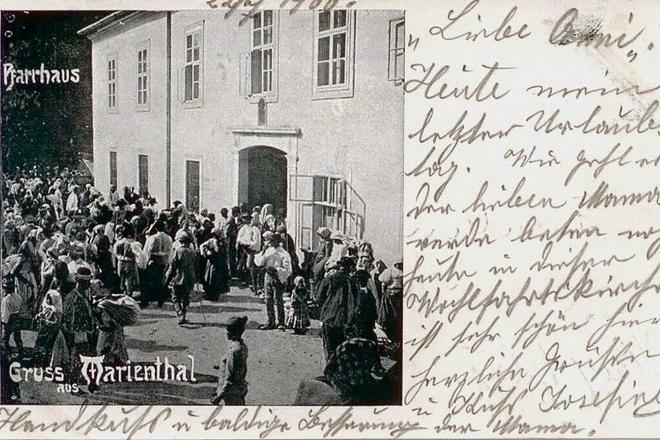FEW sites in Slovakia are of more interest to photographers and picture postcard publishers than Marianka. The oldest pilgrimage site in Slovakia has always attracted many pilgrims because of its central location and its vicinity to Bratislava. It has also been very popular with collectors of postcards. Most of the cards featured the town’s church and convent or the way of the cross. The postcard here is slightly outside the tradition – no doubt due to its date of publication. It was mailed in July 1900 and was probably published a couple of years earlier.
In this detailed image courtesy of Bratislava publisher M. Freistadt, we see pilgrims dressed in folk costumes indicating they had come from local villages.
Pilgrims have been making their way to Marianka since the middle ages, including kings and queens, such as Ludwig I and Sigismund of Luxembourg, Leopold I, Joseph I, Charles IV, as well as Maria Theresa, who visited once in 1764 and again in 1766. Marianka, also known as Mariatál, also welcomed many religious officials, cardinals, archbishops and abbots from various regions of the monarchy, who came here to grant sanctifications and give out church awards.
The notable pilgrims inspired masses of ordinary citizens to follow in their footsteps. In the 18th century, up to 100,000 pilgrims came each year – and this number includes only “registered pilgrims” who made their confessions and received Communion. In fact, many more visitors who came from the nearby regions of Nitra, Žitný Ostrov, northern Hungary, Moravia and eastern Austria – as well as Bratislava – were not included in those numbers.
When Emperor Joseph II cancelled all pilgrimages of more than one day, it caused a huge drop in the number of pilgrims. In effect this edict meant that only people from nearby regions would take the trouble to make the journey. Later, however, this decision was revoked and pilgrimages gradually increased to the numbers of previous years.


